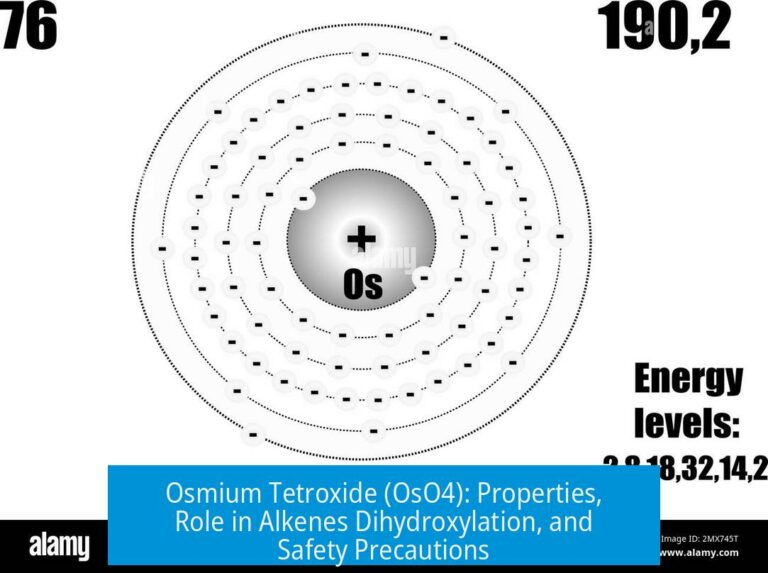Q5 or Phusion: Choosing the Right DNA Polymerase
 Both Q5 and Phusion DNA polymerases offer excellent fidelity and performance, with minor differences that influence their use in specific PCR applications. Both enzymes fuse to the same processivity domain but differ in their sequences; Phusion is a Pfu polymerase variant with around 56 mutations, while Q5’s exact sequence is proprietary and hidden in patents.
Both Q5 and Phusion DNA polymerases offer excellent fidelity and performance, with minor differences that influence their use in specific PCR applications. Both enzymes fuse to the same processivity domain but differ in their sequences; Phusion is a Pfu polymerase variant with around 56 mutations, while Q5’s exact sequence is proprietary and hidden in patents.
Fidelity and Performance
Both polymerases exhibit very high fidelity, significantly surpassing traditional enzymes like Taq and DeepVent. Users rarely observe fidelity issues with either. This high accuracy makes both enzymes preferred choices in cloning and sequencing tasks requiring low error rates.

Usage Preferences and Practical Considerations
- Q5 Advantages: Q5 is known for its high speed, amplifying long targets efficiently—for example, a 14 kb amplicon can be completed in about 4 minutes. Its higher melting temperature (Tm) benefits reactions with short primers.
- Phusion Strengths: Phusion often works better with difficult templates such as clinical PCR (cPCR) samples, where it can outperform other polymerases.
- Lab Practices: Some users keep both polymerases for flexibility. Labs have reported transitioning from Phusion to Q5 due to Q5’s superior success during troubleshooting difficult templates.
Temperature and Buffer Differences

Q5 uses buffers that foster higher Tm values, which can enhance primer annealing specificity. Phusion’s buffer composition differs notably, requiring care during PCR cleanup to avoid precipitation issues, especially when avoiding phenol-chloroform extraction.
Comparison on Template Complexity

For easy-to-amplify templates, both enzymes yield comparable results in speed and fidelity. The choice often depends on template complexity and workflow preferences.
Context with Other Polymerases

KOD and Pfu polymerases also play roles in high-fidelity PCR, but Phusion and Q5 are generally favored in modern laboratories. Different labs show preferences; some predominantly use Phusion, while others switch to Q5 or consider Kapa HiFi as competition.
Key Takeaways

- Q5 and Phusion provide similarly high fidelity, outperforming many traditional polymerases.
- Q5 is faster and offers higher melting temperatures suitable for short primers.
- Phusion excels with difficult templates and remains a reliable choice for challenging PCR.
- Buffers differ, affecting reaction setup and cleanup.
- Many labs keep both enzymes to cover a broad range of PCR needs.
Q5 or Phusion? Deciding the Best High-Fidelity DNA Polymerase for Your PCR
Are you stuck choosing between Q5 and Phusion polymerases? Let’s cut to the chase: Q5 and Phusion are both top-tier, high-fidelity DNA polymerases, with Q5 gaining ground as the preferred enzyme by many due to its speed and robustness. But the story doesn’t end there—let’s dive deeper and uncover each enzyme’s nuances, quirks, and secret sauce.

Choosing the right DNA polymerase can feel like picking the star player for your PCR team. Both Q5 and Phusion have earned reputations as high-fidelity champions, far outpacing classic enzymes like Taq or deep-Vent when it comes to accuracy.
1. The Background: Are They Related? Spoiler: Yes, but with a Twist
Now, here’s a geeky fact to impress your lab buddies: both Q5 and Phusion fuse their polymerase core to the same processivity domain. This processivity domain essentially acts like a seatbelt—holding the enzyme on the DNA strand longer for more efficient copying.
Phusion is essentially Pfu polymerase with about 56 mutations layered in. These mutations are carefully engineered tweaks aimed at boosting performance. Q5, on the other hand, keeps its exact sequence under wraps, nestled inside their patent documents, making it a bit of a polymerase mystery box.
2. Fidelity & Performance: Both Are Insanely Good—So What’s the Difference?
If you’ve ever worried about getting those pesky PCR errors, fear not. Both Phusion and Q5 boast sky-high fidelity that puts older enzymes to shame. From experience and numerous lab tales, users report no significant fidelity difference working with either enzyme. They’re both champs compared to your standard Taq.
In the race for accuracy, many labs now prefer these two over all others. Their proofreading ability means fewer mutations sneaking into your PCR products.
3. Usage Preferences: Tales from the Bench & Practical Tips
Here’s where things get interesting and personal. One researcher confessed, “I like Q5 only because I bought too much!” That’s quite a practical reason to pick an enzyme. But jokes aside, many scientists note that Q5 is blazing fast. For example, it can process a 14 kb amplicon in just 4 minutes. That’s almost coffee break speed for long-range PCR.
Phusion shines in handling difficult templates, such as complex cPCR tasks. So some labs keep both enzymes ready: Q5 for routine fast run, Phusion for those stubborn templates that just won’t behave.
Another turning point came in troubleshooting. One group switched entirely from Phusion to Q5 after finding that Q5 solved amplification issues more successfully. Yet, some die-hard Phusion fans haven’t tried Q5 but attest Phusion thoroughly beats all other enzymes they’ve used.
4. Temperature and Buffers: Small Differences With Big Impact
Curious about thermal performance? Q5 sports a higher melting temperature (Tm), making it excellent for short primer designs. This higher Tm offers more stringent annealing conditions, reducing off-target binding.
Buffer chemistry between Phusion and Q5 differs significantly. When purifying PCR products, one must be cautious. Using phenol-chloroform extraction can cause precipitates in the pellet due to buffer components. Instead, PCR column cleanup is safer to avoid nasty surprises.
5. Template Complexity: When One Might Edge Out the Other
On easy templates, both enzymes deliver similar results. So, if you’re amplifying a straightforward DNA segment, either enzyme will serve you well without much fuss.
However, for complex templates with high GC content or strong secondary structures, Phusion sometimes edges ahead. This specific ability is why some researchers keep it in their toolkit, even if Q5 is their go-to enzyme.
6. The Bigger Context: Kapa HiFi, KOD, and Other Contenders
The plot thickens when you throw other polymerases into the mix. Kapa HiFi, for example, is a well-known competitor. Some researchers feel the real battle is now between Q5 and Kapa HiFi, with Phusion taking a backseat.
KOD and Pfu also linger in the background, but neither matches the combined speed and fidelity perks of Q5 or Phusion. Notably, lab culture influences enzyme choice: some labs remain loyal to Phusion, while others swear by Q5. This diversity highlights that enzyme choice is sometimes as personal as lab coat color.
So, Which Polymerase Should You Pick?
Here’s a simple checklist to guide your choice:
- Need blazing speed? Q5 wins hands down.
- Handling tough PCR templates? Phusion might be your silent hero.
- Want broad lab support and a secret recipe? Q5, as proprietary as it is, encourages more peer support.
- Budget or bulk purchase influence? Sometimes practical reasons rule, like “I bought too much Q5.”
Ultimately, both enzymes bring excellent fidelity, making your experiments reliable. Many labs even adopt a “why not both?” attitude, stocking both to switch based on project needs and temperamental templates.
Final Thoughts: Embrace a Flexible PCR Strategy
Rather than obsess over Q5 or Phusion, consider your PCR goals first: speed, template complexity, and personal experience. Keep an open mind—being flexible about enzyme choice can save you hours of troubleshooting.
Want to amp up your PCR game? Test both enzymes on your particular template. Run parallel reactions and see which polymerase leaps over your experimental hurdles. And remember: your enzyme is only as good as your primer design and reaction conditions.
Have you had a dramatic “aha!” moment choosing between Q5 and Phusion? Share your story! Sometimes the best wisdom comes from lab legends who’ve battled through the PCR trenches.
“Q5 makes my 14kb amplicons fly, but for that stubborn GC-rich nightmare, Phusion’s my trusty sidekick.”
So next time you face the Q5 or Phusion dilemma, you’ll know it’s not just about fidelity—speed, toughness, and personal history all play a role. Happy amplifying!
What are the main differences between Q5 and Phusion polymerases?
Q5 and Phusion share a fused processivity domain. Phusion is a pfu polymerase with about 56 mutations, while Q5’s exact sequence is proprietary. Their buffers and melting temperatures differ significantly.
Which polymerase performs better on difficult templates?
Phusion often works better on challenging templates, like complex PCR reactions. Many users keep both, using Phusion for tough samples and Q5 for speed and versatility.
How do Q5 and Phusion compare in terms of PCR speed?
Q5 is known for faster PCR runs. For example, it can amplify a 14kb fragment in about 4 minutes, which is generally quicker than Phusion.
Is there a significant fidelity difference between Q5 and Phusion?
Both have very high fidelity, far surpassing enzymes like Taq and deep-Vent. No major fidelity difference is typically observed between the two.
Why do some labs prefer Q5 over Phusion?
Many have switched to Q5 due to its speed and success in troubleshooting difficult templates. Some labs prefer Q5 simply because they purchased it in larger quantities.





Leave a Comment